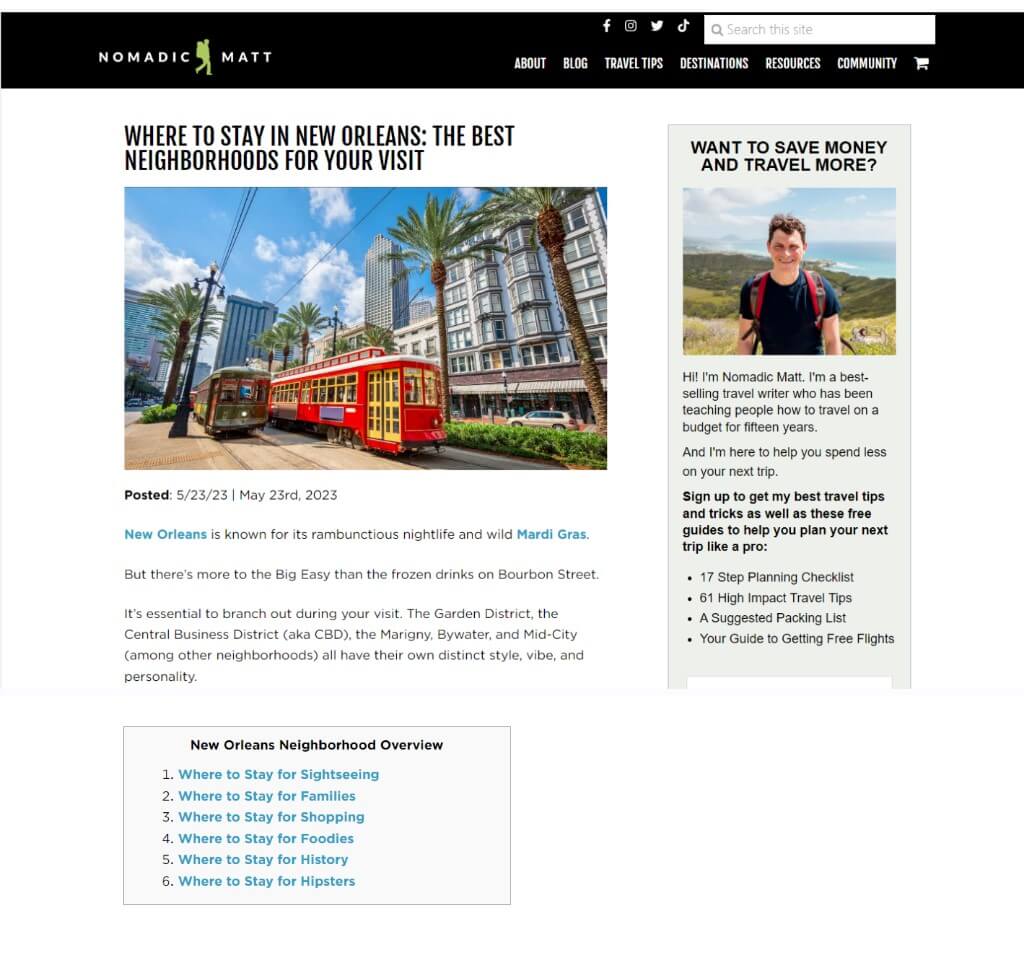Decoding Blog Post Length (Insider Tips for Finding the Perfect Word Count)
Category: Web Design

8 mins read
Did you realize that the length of your blog posts holds immense power in shaping search engine rankings and capturing reader engagement? In today's digital age, where content is abundant and attention spans are limited, finding the optimal length for your blog posts is crucial to capture your audience's attention and maximize the impact of your content.
In this article:
With millions of blog posts being published daily, standing out from the crowd and reaching the top of search results has become increasingly challenging. The length of your blog post plays a vital role in search engine optimization (SEO), affecting factors such as keyword usage, readability, and user experience. Additionally, it influences reader engagement, determining how well your message resonates and keeps readers hooked until the end.
In this article, we will explore the factors to consider when determining the ideal length for your blog posts. By understanding the impact of length on SEO and reader engagement, you possess the expertise to generate captivating and impactful content that deeply connects with your audience, enhances your search engine rankings, and attracts a larger influx of visitors to your blog. Let's dive into each section to uncover the secrets of optimizing your blog post length and unlocking its full potential.
Part 1. Why Blog Post Length Matters
In the fast-paced world of blogging, the length of your blog posts holds immense power. It not only impacts your SEO rankings but also shapes reader engagement and user experience. Understanding the significance of blog post length is essential for creating captivating content that resonates with your audience and drives meaningful results.
Dominating the SEO Game
When it comes to SEO rankings, Blog post length significantly influences SEO rankings. Search engines, like Google, tend to favor longer posts ranging from 1,500 to 2,500 words. Craft longer, well-optimized blog posts to increase your chances of ranking higher in search results and attracting a steady stream of organic traffic.
Engaging Readers, Elevating Experience
The length of your blog posts directly influences reader engagement and user experience. Striking the right balance is key. Engaging and informative blog posts that meet the needs of your target audience are more likely to be shared, commented on, and revisited, fostering a loyal readership and amplifying your online presence.
Unveiling Depth through Length
Certain topics demand a thorough exploration, warranting longer posts that delve into the nuances and intricacies. In-depth content establishes you as an authoritative source, building credibility within your niche.
By recognizing the impact of blog post length on SEO rankings, reader engagement, and the correlation between content depth and post length, you can make informed decisions that captivate your audience and drive results. In the next section, we will dive deeper into the factors to consider when determining the ideal length for your blog posts, equipping you with the knowledge to create compelling content that stands out from the crowd.
Part 2. Factors to Consider: Tailoring Length to Your Audience, Content, and Competition
When determining the ideal length for your blog posts, several crucial factors come into play. By carefully considering your target audience, content type and purpose, and conducting competition analysis, you can tailor your posts to meet the unique needs and preferences of your readers while gaining a competitive edge in the digital landscape.
Understanding Your Target Audience
Understanding your target audience is essential. Consider the demographics, interests, and behavior of your readers. Are they seeking quick, bite-sized information, or are they more inclined to dive deep into comprehensive articles? By aligning your blog post length with their desires, you can keep them engaged and satisfied.
Adapting to Content Type and Purpose
Different types of content necessitate varying lengths to effectively convey their intended message. Informative posts that aim to educate and provide insights might require more extensive coverage, allowing readers to grasp complex concepts fully. Instructional content may benefit from a step-by-step approach, making shorter, focused posts more suitable.
Additionally, storytelling posts may captivate readers with a balance of brevity and vivid descriptions, creating an emotional connection. Considering the specific goals of your content and the most effective way to achieve them will guide you in determining the appropriate length for each blog post.
Analyzing the Competition
Conducting competition analysis can offer valuable insights into the blog post lengths adopted by other successful bloggers in your niche. Analyze the top-ranking posts and observe their word counts. While it's essential to differentiate your content and not merely imitate others, understanding the trends and patterns in your industry can help inform your decision-making process. Strive to create blog posts that are comprehensive, unique, and tailored to your audience's needs, while also considering the competitive landscape.
By carefully considering these factors, you can strike a balance between providing valuable content and meeting the preferences and expectations of your target audience. Tailoring your blog post length to suit these factors will enhance engagement, increase reader satisfaction, and improve the overall effectiveness of your content.
Part 3. Optimal Blog Post Length Guidelines
When it comes to blog post length, it's important to strike a balance between providing comprehensive information and keeping your audience engaged. While search engines like Google often favor longer-form content, particularly in the range of 1500-2500 words, the ultimate goal should always be to create valuable and engaging content that meets the needs of your audience.
Here are some guidelines to consider based on different word count ranges:
- Less than 300 words: Short-form content can be highly effective for delivering concise and focused information. It's suitable for quick tips, brief updates, or introductory posts.
- 300-600 words: In this range, you have slightly more room to expand on your topic. It allows for a bit more depth while still maintaining a concise and digestible format. Consider using subheadings and bullet points to enhance readability.
- 600-1000 words: This word count range offers a good balance between providing valuable insights and maintaining reader engagement. It allows you to explore your topic more extensively and provide examples, case studies, or practical tips.
- 1000-1500 words: With this range, you can delve deeper into your subject matter and provide a more comprehensive analysis. It allows for a thorough exploration of the topic while still keeping readers engaged.
- 1500-2000 words: At this length, you have ample opportunity to provide in-depth analysis, research findings, and supporting evidence. Longer posts of this nature can establish your expertise and authority in your niche.
- 2000-2500 words: This range is particularly suitable for comprehensive guides, tutorials, or detailed product reviews. It allows for a thorough examination of the topic, covering various aspects and addressing potential questions or concerns.
- More than 4000 words: For highly detailed and extensive content, such as comprehensive research studies or ultimate guides, longer posts can be valuable. They provide a deep dive into the subject matter, covering multiple subtopics and offering a wealth of information.
Remember, while word count can serve as a general guideline, it's important to prioritize the quality and relevance of your content. Focus on delivering value, engaging your audience, and addressing their needs, and you'll create blog posts that resonate and drive results.
Next, we'll explore effective strategies for crafting long-form blog posts that captivate your audience and enhance your online presence.
Part 4. How to Write Long-Form Blog Posts (10 Tips)
Writing long-form blog posts requires unique skills and strategies to captivate readers and deliver valuable insights. In this section, we'll explore ten essential tips to master the art of crafting engaging and impactful long-form content. Whether you're an experienced blogger or new to long-form writing, these tips will equip you with the knowledge and strategies to create compelling blog posts that resonate with your audience.
Conduct Thorough Research and Plan

Immerse yourself in comprehensive research on your chosen topic, gathering relevant information, statistics, and examples to enrich your content. If you're writing a blog post about healthy eating habits, delve into the latest scientific studies, nutrition guidelines, and success stories for a well-rounded perspective.
Structure the Content with Clear Headings and Subheadings

Organize your blog post using clear and descriptive headings and subheadings, allowing readers to navigate your content effortlessly and find specific information. When writing a travel guide, create headings like "Top Attractions," "Local Cuisine," and "Accommodation Options" to break down the content into manageable sections.
Enhance the Post with Visuals and Multimedia

Bring your blog post to life by incorporating captivating visuals and multimedia elements. If you're writing a DIY tutorial, include step-by-step images or videos to guide readers through the process, making the content more engaging and helping readers grasp concepts visually.
Incorporate Relevant Examples and Case Studies

Illustrate your points with real-world examples and case studies that resonate with your readers. When writing a blog post about successful entrepreneurs, share inspiring stories of individuals who have achieved remarkable success through their innovative ideas and perseverance, making your content relatable and adding credibility.
Utilize Bullet Points and Lists
Present information concisely and in an easily scannable format by using bullet points, numbered lists, or checklists. If you're writing a productivity guide, create a bullet-pointed list of time-saving tips, enabling readers to quickly grasp key points and takeaways from your post.
Provide Actionable Takeaways and Practical Tips

Empower your readers by offering actionable takeaways and practical tips they can implement immediately. For instance, in a personal finance blog post, provide specific budgeting strategies or investment advice that readers can apply to their financial goals, making your content valuable and relevant to your audience.
Optimize Readability and Scannability
Ensure your blog post is easy to read and scan by using short paragraphs, clear language, and concise sentences. Break down complex ideas into digestible chunks. For example, when explaining a technical concept, divide it into smaller sections with clear explanations, enhancing comprehension and readability.
Pay Attention to Formatting and Spacing
Maintain consistent formatting throughout your blog post, including font styles, sizes, and paragraph spacing. Use headings, subheadings, and bold text to emphasize important points. For instance, if you're highlighting key benefits of a product, use bold text to draw attention to each benefit, guiding readers through your content effectively.
Incorporate Internal and External Links for Additional Context
Enhance the depth of your blog post by including internal and external links. Internal links direct readers to other relevant articles or resources within your blog, while external links provide additional context and support your arguments with reputable sources. For example, if you're discussing a specific study, provide a link to the original research paper, expanding readers' knowledge and providing avenues for further exploration.
Proofread and Edit the Post for Clarity and Conciseness
Prior to publishing, meticulously review and revise your blog post, ensuring it is free of errors and polished to perfection. Check for grammatical errors, typos, and inconsistencies. Trim unnecessary content to ensure your writing is clear and concise. For example, remove redundant phrases or unnecessary adjectives. Editing enhances the overall quality and professionalism of your blog post.
By implementing these ten tips, you'll be equipped with the knowledge and strategies to write compelling long-form blog posts that engage your readers and provide valuable insights. Mastering the art of writing long-form content allows you to captivate your audience, establish your expertise, and make a lasting impact with your blog posts.
Wrap Up
Understanding the importance of blog post length is crucial for capturing your audience's attention, improving search engine rankings, and driving traffic to your blog. Tailor the length to your target audience, content type, and competition. Incorporate strategies like thorough research, clear headings, visuals, examples, and actionable takeaways. With these tips, write compelling long-form blog posts that resonate and enhance your online presence. Explore the secrets of optimizing your blog post length and unlocking its potential.




















